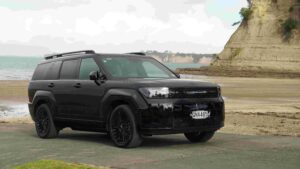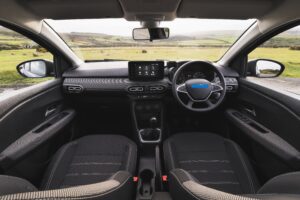First off, I will start by saying that I am not the type of person to go around boasting about my achievements. But in this scenario, I am going to be shameless and say I am a good driver. I would say that the amount of driving I have done and the variety of it gives me the ability to say that but even the best of drivers would have been challenged by my most recent drive.
I have been planning a road trip for my friends since earlier this year and we finally had the opportunity to take one. We decided that the Northland region of New Zealand would be a fitting destination. It is of course known to have an ‘endless summer’, something that would be a welcome change from these cold Auckland nights. Trouble is that our trip coincided with some bad weather warnings. Normally, there are a few showers and the storm passes over but not this time. We found ourselves in the middle of a once in 500 year storm which meant farms turned into lakes and rivers ran their course over the road.
Not only did the rain drastically reduce visibility, we set off for Cape Reinga before dawn to catch the sunrise and because it is darkest before dawn, the visibility was worse than zero. That coupled with the heavy surface water and mad tailgating locals made it the most dangerous drive of my life. Thankfully, I made it back home which is why you are reading this now. And thanks to my experiences last week, I have gathered some tips that could make bad weather driving a little less dangerous for you.

Follow the signs
I hate to state the obvious but if the sign says ‘Slippery when wet’, it does not mean that your local government are big Bon Jovi fans but instead means that the road really does get slippery in the rain. The more extreme the weather, the less your grip will be on the road. And that is all the more reason to be more gentle in the corners and a little light on the accelerator while on the straights. Spirited driving is not a good idea in heavy rain.

Reduce speed
One of the safest things you can do in situations where visibility is dangerously low is to reduce your speed. Doing so will allow you to stop faster when you see things like large puddles on the road where otherwise you would just skid over the top of them. It also increases your likelihood of surviving a crash should that unfortunate scenario unfold. Speaking of lowering speeds, you should always cross rivers and water bodies at low speeds. No matter whether you have a raised SUV or a sports sedan. Doing so is not only safer for you but also more considerate toward others drivers so you don’t splash them with waves. While we are on this topic of reduced speeds, it is important to keep in mind that your journey will take longer because of the poor conditions. Driving at lower speeds is inevitable and so planning ahead is a good idea.

Take breaks
Driving in poor conditions requires extra focus on the part of the driver and that is tiring. The effect becomes even worse if the driver is sleep deprived. Therefore, it is a good idea to take rest stops while on long trips as it helps keep the driver fresh. Another suggestion is to travel with friends who also have a driving license so the duties can be split. Fatigued driving is extremely dangerous in any case and the effect only becomes worse in poor conditions so be careful out there!
I feel like this summary is a good analogy for life in general. There will always be bad times and at times those will becomes downright awful just like the once in 500 years storm that we weathered. However, the reward on the other side is worth the effort. Making that journey to Cape Reinga (the northern most point of New Zealand) was near impossible but when we got there, the weather cleared for two hours allowing us to take pictures like the one below.











